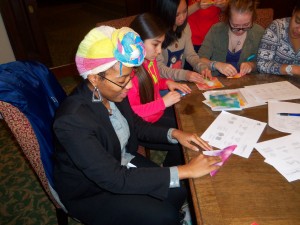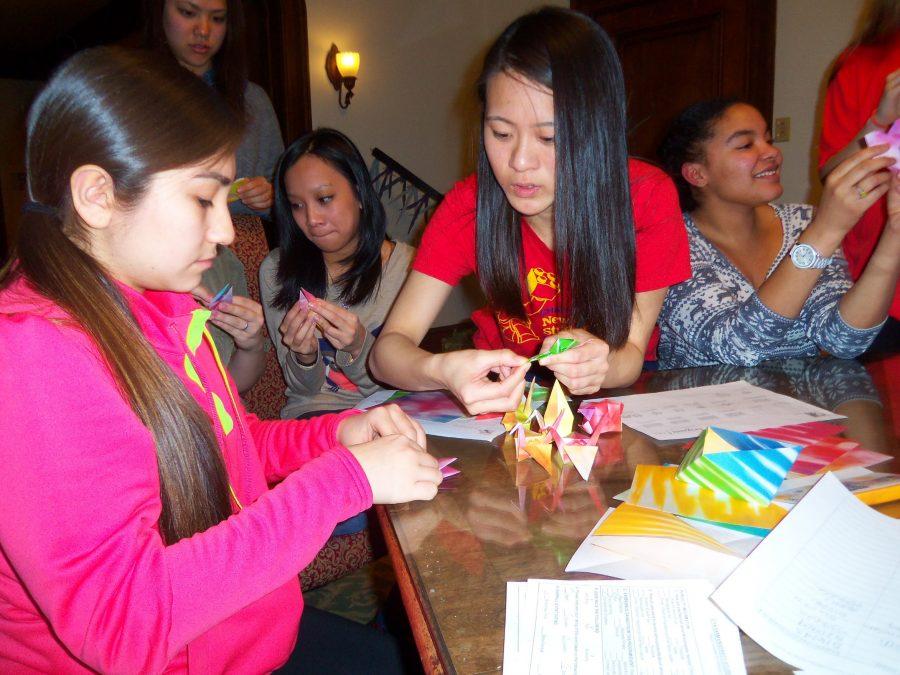Monday Night Edge is a popular way to wind down the first day of a new week at Chatham. Laughlin House hosted MNE on January 27, and attendees were taught how to make origami figures, including lotus flowers, cranes, boxes, and hearts.
During the event, a brief history of origami was given. Origami–the art of paper folding–originated in China during the Sung Dynasty, and eventually migrated to Japan, where it became popular during the Edo Period, sometime in the mid to late 17th century. By the mid-1900s, origami as an art form had spread outside Japan and had gained popularity around the world.

One of the stories told during the event was “Sadako and the Thousand Paper Cranes”, which was an account of the life of Sadako Sasaki. Sadako was two years old when the atomic bomb was dropped on Hiroshima, near her home by the Misasa Bridge. In 1955, Sadako was diagnosed with leukemia and given, at most, a year to live. A friend visited her in the hospital and taught her how to fold a paper crane.
The paper crane was part of an old Japanese story that said if a person managed to fold 1000 paper cranes, they would be granted one wish. Although the book and the actual account of Sadako’s life disagree on the exact number, she did manage to fold one thousand cranes before her death, using whatever paper she could acquire. The monument in her honor–the Children’s Peace Monument–continues to receive folded paper cranes every year on Obon Day.

Although the entire story was not told at MNE, details were mentioned and briefly discussed as various projects were constructed. The rest of the evening passed on a much less solemn note and attendees made a variety of multi-colored cranes and boxes to hold them.


